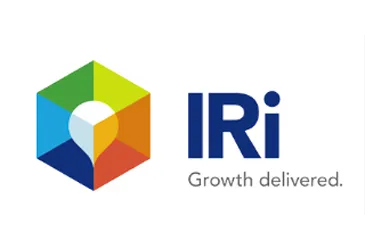CHICAGO — Dollar stores and digital retailers are the primary beneficiaries as consumers shift their shopping habits to save time, effort and money, IRI says in its latest Consumer Connect survey.
IRI analyzes this shift in a January 27 report titled “Channel Trends in CPG Today,” which finds that consumers remain confident about their financial wellbeing.
“The optimism we recorded in our Consumer Connect survey is likely to have a positive effect on sales in the CPG industry, which we expect to continue growing incrementally through 2020 and exceed $886 billion by 2021,” said Joan Driggs, vice president of content and thought leadership for IRI. “That said, certain channels — such as dollar and e-commerce — provide stronger value propositions to customers and are gaining shopper visits, while more traditional retail channels, such as mass market, supercenters, drug and grocery, show declining visits. This suggests that, despite their confidence in the future, consumers are still focused on finding new ways to save.”
IRI observed that demand for convenience and value is increasingly influential in persuading a consumer to shop through a specific channel and at a specific store. Value retailers, which include dollar stores and e-commerce, have seen 1.4- and 6-point increases in penetration, respectively, since 2016.
Although shoppers still favor traditional channels, penetration at grocery stores, drug and mass retailers has declined since 2016, IRI said.
When deciding where to shop, consumers weigh in-store experiential concepts and ease of navigation in addition to price, IRI found.
“Consumers across the board cited time and cost savings as key drivers of where they choose to shop, which is causing a shift away from the channels that we are used to seeing dominate the CPG space,” said Driggs. “In particular, we found that heavy shoppers are being attracted to dollar retailers over competing channels, likely because they are looking for ways to save. We expect this will continue to negatively impact sectors like grocery and pharmacy, which have lost their ability to protect and cultivate their core shopper base.”
The ease and value of the dollar channel led consumers in 2018 to increase the frequency of trips per month and per-trip spending, relative to competing channels, IRI said in the report.
E-commerce platforms also experienced a greater number of trips, but saw average basket size decrease, as shoppers got more comfortable with the platform and the expectation of quick delivery.
IRI’s Consumer Connect Index monitors financial health and outlook of consumers across income groups, races and generations. Consumer confidence increased 1.5% in the three months through December 31, according to IRI. Fifty-seven percent of consumers reported feeling good about their financial health and 73% expressed confidence that their households’ economic wellbeing would improve within the subsequent six months.
IRI observed the most widespread feeling of financial stability among older generations and high-income households, as well as Asian and non-Hispanic consumers. Millennials and African-Americans reported the most widespread optimism that their financial health would improve in the near term.










